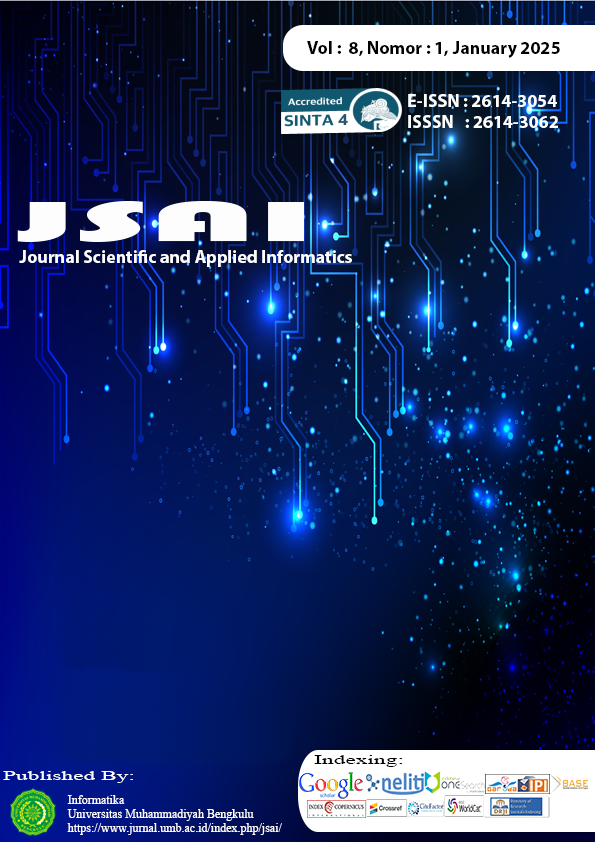Comparison of the Performance of XGBoost, CatBoost, and GBM Algorithms in Cardiovascular Disease Prediction
DOI:
https://doi.org/10.36085/jsai.v8i1.7552Abstract
Cardiovascular disease remains the primary cause of mortality globally, encompassing conditions affecting the heart and blood vessels, such as hypertension and coronary artery disease. Risk factors include unhealthy lifestyle habits and immutable factors like age and family history. To tackle the challenges in early detection and prediction of cardiovascular disease, machine learning techniques, especially boosting algorithms, have emerged as promising tools. This study evaluates the performance of three prominent boosting algorithms: XGBoost, CatBoost, and Gradient Boosting—using publicly available datasets to predict cardiovascular disease risk. The findings reveal that CatBoost surpasses the other models with an accuracy of 75%, a Precision of 0.83, and a ROC AUC of 0.81, highlighting its exceptional predictive capabilities. Gradient Boosting achieves 70% accuracy with a well-balanced Recall and Precision, whereas XGBoost records the lowest performance with 63.3% accuracy across all metrics. These results position CatBoost as the most effective model for cardiovascular disease risk prediction.
Downloads
Published
Issue
Section
License
Copyright (c) 2025 Panwasto Samosir P, Umniy Salamah

This work is licensed under a Creative Commons Attribution-NonCommercial-NoDerivatives 4.0 International License.







